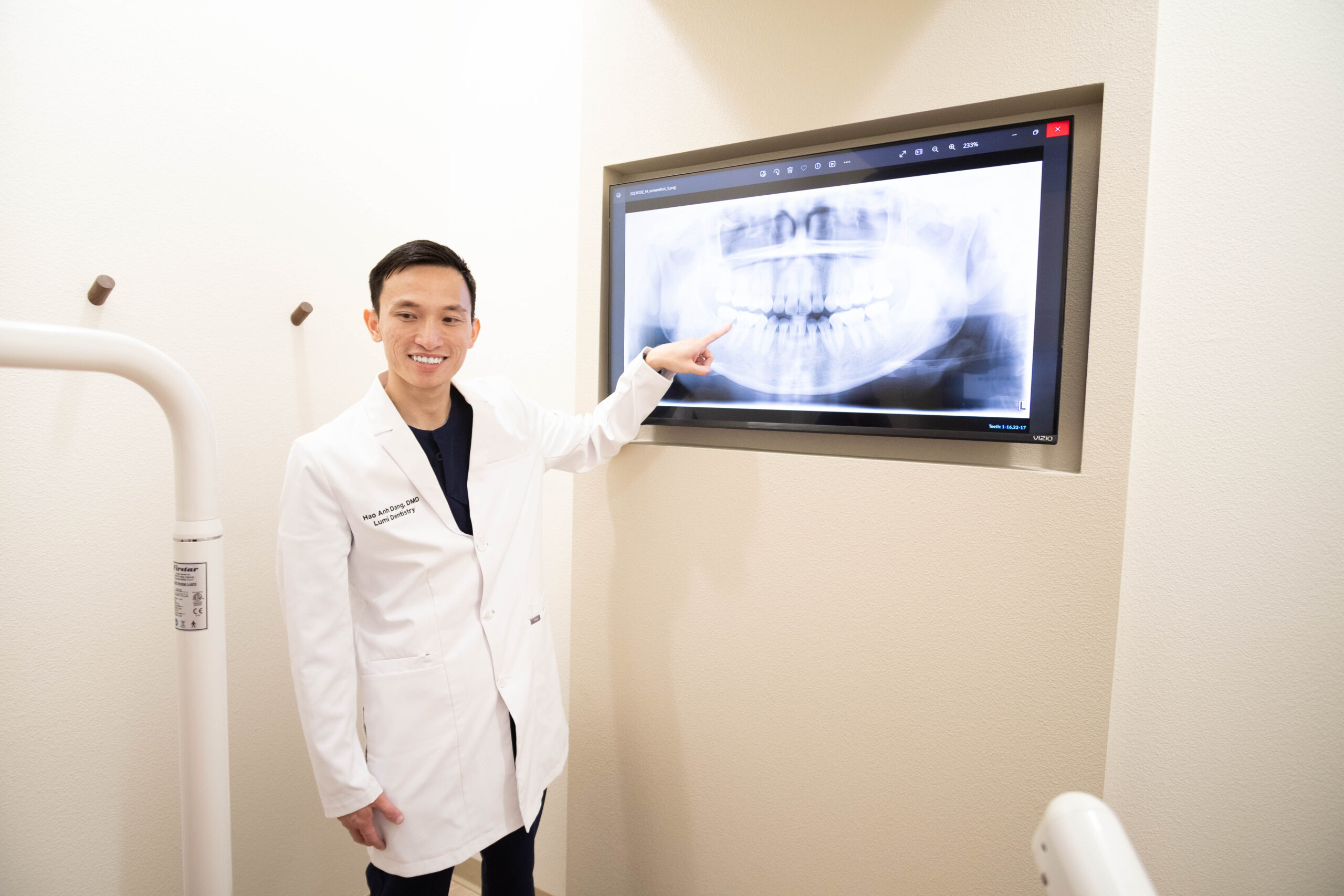In addition to cleanings and checkups, a good component of preventative dental care is using mouthwash after flossing and before brushing. However, there are a lot of options on the market, all brightly colored and vying for your attention. Let Lumi Family Dentistry take away the guesswork. Our Sachse, TX, dentist can tell you what to look for on that label, homemade alternatives, and when your mouthwash is actually covering up a problem.
Key Ingredients in Mouth Rinses
The American Dental Association (ADA) provides guidance on how rinse ingredients help your oral health. They distinguish between cosmetic and therapeutic mouthwashes. Cosmetic rinses freshen your breath or get a bad taste out of your mouth. For actual treatment, look for:
- Fluoride
- Peroxide
- Essential Oils
Fluoride strengthens tooth enamel, while peroxide helps clean and whiten. The ADA reports that some essential oils are antimicrobial and can fight plaque.
For pain relief, look for ingredients with “-caine” at the end, like lidocaine or benzocaine. These indicate anesthetic properties that help sores or irritated gums and can alleviate pain after dental procedures.
Check for the ADA Seal
This seal indicates that the organization evaluated a product and deemed it safe and effective. This can help you distinguish between rinses that taste good but do little and ones that actually cleanse and protect teeth.
Homemade Oral Rinse Options
Maybe you can’t make it to the store. You might be wary of synthetic ingredients. Whatever the case, we can recommend home remedies that support dental health.
- Saltwater Rinse – Mix ½ teaspoon of salt in a cup of warm water. This helps with pain and inflammation and can kill bacteria. Gargle with this if you have a sore throat.
- Baking Soda Rinse – Mix 1 teaspoon of baking soda with a cup of warm water to create this solution, which has antimicrobial properties.
- Peppermint Oil Rinse – Another option with antimicrobial properties, this rinse is made with just one or two drops of oil in a cup of warm water. Make sure you use food-grade peppermint oil.
Floss before and brush your teeth after to completely clean your mouth.
When Mouthwash Conceals a Dental Problem
If your interest in mouthwashes is prompted by a specific symptom, reach out to Lumi Family Dentistry to make sure there isn’t a bigger issue, especially if you’re experiencing the following.
Bad Breath
Having stinky breath from time to time is normal, but consistent bad breath could mean your oral health is off. You could need halitosis treatment to get a deeper clean of your teeth and gums.
Tooth or Gum Pain
Tooth pain can point to a cavity or fracture, while gum pain can indicate gum disease and gingivitis. These are treatable issues, but the sooner you check with our dentist, the better. If you’re self-medicating with an anesthetic mouthwash instead of getting care for the underlying cause, you may end up needing more invasive treatment like a root canal.
Get Personalized Oral Rinse Recommendations from Our Sachse, TX, Dentist
At Lumi Family Dentistry, we treat each patient as an individual. That extends to the recommendations we make after you leave our office. If you need help picking out or making an oral rinse, talk to our Sachse, TX, dentist. If your mouthwash isn’t working for you, we can take a look to ensure there aren’t any red flags about your dental health. Make an appointment for this personalized support!




